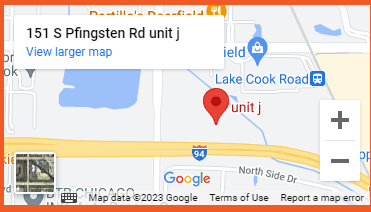When planning to build a tennis court, understanding the various cost factors involved is crucial for effective budget planning. Tennis court construction costs can vary widely based on several factors, including the type of court, location, materials used, and additional features. This article provides a detailed breakdown of costs involved in tennis court construction, offering budgeting advice to help you make informed decisions.
Initial Considerations
When embarking on tennis court construction, initial considerations play a pivotal role in shaping the project’s budget. The choice of court surface—be it clay, grass, or hard court—dictates not only the construction techniques required but also impacts the long-term maintenance costs, thus significantly affecting the overall budget. Moreover, the court’s geographical location can influence expenses in numerous ways. Site preparation costs can escalate in areas with challenging terrain or poor accessibility, and local labor rates can vary dramatically across different regions. These factors combined make the early planning phase crucial for a financially viable tennis court construction project.
Breakdown of Costs
The construction of a tennis court is a multifaceted project with various cost components that must be carefully considered to ensure a well-budgeted and successful outcome.
- Site Preparation: This initial phase involves making the land suitable for construction. Tasks such as land clearing, grading for a level base, and implementing proper drainage systems are crucial to prevent future water damage and ensure the longevity of the court. The costs for site preparation are highly variable and heavily dependent on the existing condition of the site and the extent of the required work.
- Surface Material: The selection of the court surface is a major factor that influences both the upfront and long-term costs. Hard courts, typically made of concrete or asphalt, offer a more cost-effective solution initially. These surfaces provide durability and require less frequent maintenance. Clay courts fall within a similar price range but demand more regular upkeep to maintain their condition. Grass courts, while offering a traditional playing surface, represent the highest cost in terms of initial installation and ongoing maintenance and care.
- Fencing and Lighting: Essential for functionality and security, fencing encompasses the court to prevent balls from exiting the play area and enhances safety. Lighting extends the usability of the court into the evening and in low-light conditions, which is particularly important for clubs and public facilities. Depending on the sophistication and quality of the lighting system, this can add an additional to the project costs.
- Accessories and Additional Features: The inclusion of extra amenities can significantly enhance the tennis court’s appeal and functionality. Simple additions, such as seating and shade structures, can require an additional outlay. For those looking to add luxury features, such as clubhouses or pavilions for spectators and players, costs can surge more, depending on the complexity and quality of the construction.
Budget Planning
Budget planning for tennis court construction involves a meticulous approach to ensure that all potential costs are accounted for and managed effectively. Obtaining detailed quotes from multiple contractors is a critical step in this process. It allows for a comprehensive comparison of costs, ensuring that you receive the best value for the work required. These quotes should encompass every aspect of the project, from site preparation to the installation of accessories and additional features.
Additionally, considering the variability and unpredictability of construction projects, setting aside a contingency fund is prudent. A fund of at least 10% of the estimated cost is recommended to cover any unforeseen expenses during the construction phase. This proactive approach helps prevent budget overruns and ensures the project can proceed smoothly even when unexpected costs occur.
Long-Term Considerations
Beyond the immediate expenses of constructing a tennis court, long-term financial planning is equally important. The maintenance requirements and associated costs of the court surface chosen will significantly impact the total cost of ownership of the tennis court. Hard courts, for example, are known for their durability but will require resurfacing approximately every 4 to 8 years. This is a critical consideration for budgeting, as failing to account for these costs can lead to unexpected financial strain in the future.
Clay courts, while offering a unique playing experience, demand regular attention to maintain their optimal condition. This includes routine tasks such as brushing, watering, and the addition of new clay material, which can accumulate in cost over time. Grass courts, revered for their traditional aesthetic and playing characteristics, necessitate the most intensive maintenance regimen. Regular mowing, watering, and periodic reseeding are essential to keep the playing surface in top condition, leading to higher ongoing maintenance costs compared to other types of courts.
Conclusion
Investing in tennis court construction requires careful consideration of various costs, including surface type, site preparation, fencing, lighting, and additional amenities. Effective budgeting is essential, taking into account both the initial construction costs and the long-term maintenance expenses. To navigate this complex process smoothly and ensure your project stays within budget, partnering with a specialist like Home Court Advantage is invaluable.
Home Court Advantage excels in designing and installing custom residential tennis courts set-up for both homes and businesses. Their expertise ensures that your court is not only built to the highest standards but also customized to fit your specific needs and budget. Home Court Advantage works closely with you from the initial design to the final installation to create a tennis court that enhances your property’s value and enjoyment.
Ready to take the first step toward your dream tennis court? Contact Home Court Advantage today and let their team help you bring your vision to life with professionalism and precision.

Nate Parsons is the owner of Home Court Advantage, a leading manufacturer and supplier of premium residential and commercial athletic courts based in Northern Illinois. With a strong background in therapeutic recreation and business from York College, Nate has excelled in the sports industry, from college tennis to national rankings in platform tennis. He has served as the Director of Racquet Sports at Glen View Club, President of the Professional Platform Tennis Association, and as a teaching professional in tennis, pickleball, and platform tennis. Nate is also the founder of Pickleball AI, a platform for tracking players and points, and Club Dink, a pickleball brand that brings fun to the game.











